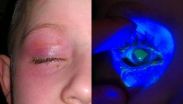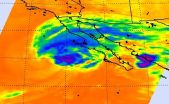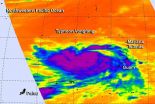(Press-News.org) Winston-Salem, N.C. – Sept. Oct. 7, 2014 – Children who start toilet training before age 2 have a three times higher risk of developing daytime wetting problems later, according to new research at Wake Forest Baptist Medical Center.
"Parents who train their children early to meet preschool deadlines, to save landfills from diapers or because they think toddlers are easier to train should know there can be serious repercussions," says lead author Steve Hodges, M.D., an associate professor of pediatric urology at Wake Forest Baptist.
The study, reported online in Research and Reports in Urology, involved 112 children ages 3 to 10. About half were seen in the urology department for daytime wetting or urinary urgency/frequency. They were compared to a group seen in a general pediatric clinic and pediatric emergency room who had no history of dysfunctional voiding.
A questionnaire was used to gather information on the age toilet training was initiated and the presence of daytime voiding dysfunction. Patients were grouped into three categories of potty training: early (before age 2), normal (between 2 and 3) and late (after age 3) training. There were 38 early, 64 normal and 10 late trainers.
Sixty percent of the early trainers had daytime wetting. They had a 3.37 times increased risk of daytime wetness as compared to the normal group. The researchers believe early trainers are more prone to subsequent voiding dysfunction because they are more apt to "hold" their stool or urine. "When children hold stool, it backs up in the rectum," Hodges explained. "The enlarged rectum presses against the bladder, reducing its capacity and causing the nerves feeding the bladder to go haywire."
In fact, in the current study, early trainers were three times more likely to complain of constipation than normal trainers. "Almost all of the children who had wetting also had constipation," Hodges noted.
Younger children also are more apt to delay peeing, behavior that can lead to bladder contractions and reduced bladder capacity. "Research has demonstrated that bladder growth continues in children up to the point of toilet training," said Hodges. "Uninhibited voiding in diapers is likely beneficial to bladder development. In my practice, it's often the children who trained earliest and most easily who end up with the most severe voiding problems."
The study also found that among the 10 children who trained after age 3, seven had daytime wetting problems, and these same seven also were constipated. The three late trainers who did not have wetting problems were not constipated.
"This does not mean late potty training causes dysfunctional voiding," Hodges explained. "It means that when kids train late, it's very likely because they are already constipated, which makes toilet training extremely difficult. Parents whose 3- or 4-year-olds have trouble training are often blamed for 'waiting too long,' but our data suggest waiting isn't the problem — instead it's likely constipation."
Hodges said constipation in children often goes undiagnosed because pediatricians, following International Children's Continence Society guidelines, simply ask parents whether their children's bowel movements are infrequent and if stool consistency is hard.
"These questions fail to detect enlarged rectums that compromise bladder capacity," said Hodges. "Children can have daily bowel movements and still be constipated. Extra-large stools and stools shaped like pellets or logs are far more indicative of constipation than bowel-movement frequency. But an X-ray will provide a definitive diagnosis."
Hodges advises parents to initiate toilet training when children show signs of readiness — and have absolutely no signs of constipation — rather than at a certain age.
"There is nothing magic about the age of two," said Hodges. "If parents opt to train early or late and are meticulous about making sure children void on a regular schedule and monitor them for signs of constipation, I suspect the incidence of voiding dysfunction would decrease."
Hodges said his study is the first to consider constipation status along with age of potty training. Other studies have found late trainers are more prone to dysfunctional voiding and concluded there's a "magic window" before age 3 during which children can avoid problems. "But these studies never considered whether the late trainers were constipated when parents tried to train them," Hodges said.
Hodges has written a book for consumers that covers this and other toileting issues in children.
INFORMATION:
Co-authors were Kyle A. Richards, M.D., Ilya Gorbachinsky, M.D., and L. Spencer Krane, M.D., of Wake Forest Baptist.
Media Contacts: Karen Richardson, krchrdsn@wakehealth.edu, (336) 716-4453) or Main Number (336) 716-4587.
Wake Forest Baptist Medical Center is a nationally recognized academic medical center in Winston-Salem, N.C., with an integrated enterprise including educational and research facilities, hospitals, clinics, diagnostic centers and other primary and specialty care facilities serving 24 counties in northwest North Carolina and southwest Virginia. Its divisions are Wake Forest Baptist Health, a regional clinical system with close to 175 locations, 900 physicians and 1,000 acute care beds; Wake Forest School of Medicine, an established leader in medical education and research; and Wake Forest Innovations, which promotes the commercialization of research discoveries and operates Wake Forest Innovation Quarter, an urban research and business park specializing in biotechnology, materials science and information technology. Wake Forest Baptist clinical, research and educational programs are annually ranked among the best in the country by U.S. News & World Report.
ROSEMONT, Ill.—Physical therapy after total hip (THR) or total knee replacement (TKR) surgery is standard care for all patients. A new study, appearing in the October 1 issue of the Journal of Bone & Joint Surgery (JBJS), also found that physical therapy before joint replacement surgery, or "prehabilitation," can diminish the need for postoperative care by nearly 30 percent, saving an average of $1,215 per patient in skilled nursing facility, home health agency or other postoperative care.
Approximately 50 million U.S. adults have physician-diagnosed arthritis. ...
San Francisco, CA, October 7, 2014 – Liquid laundry and dishwasher detergent pods are an emerging source of chemical exposure in children. When squeezed or bitten into, these pods can burst and send detergent into the mouth, nose, and eyes. A new report published in the current issue of the Journal of the American Association for Pediatric Ophthalmology and Strabismus (AAPOS) cautions that these products should be kept away from children because the bursting detergent pods can cause significant corneal injury.
Detergent pods may offer a simpler way to do laundry, ...
Studying rats as model subjects, scientists found that adolescents were at an increased risk of suffering negative health effects from sugar-sweetened beverage consumption.
Adolescent rats that freely consumed large quantities of liquid solutions containing sugar or high-fructose corn syrup (HFCS) in concentrations comparable to popular sugar-sweetened beverages experienced memory problems and brain inflammation, and became pre-diabetic, according to a new study from USC. Neither adult rats fed the sugary drinks nor adolescent rats who did not consume sugar had the same ...
Research on zoantharians, a group of animals related to corals and anemones, by researchers James Reimer of the University of the Ryukyus in Okinawa, Japan, Angelo Poliseno of Universita Politecnica delle Marche in Italy, and Bert Hoeksema from Naturalis Biodiversity Center, Netherlands, has demonstrated how little we know about marine diversity in the so-called "center of marine biodiversity" located in the central Indo-Pacific Ocean. The study was published in the open access journal ZooKeys.
The researchers utilized previously collected specimens from Indonesia, ...
Philadelphia, PA, October 6, 2014 – Sandwiches make up a substantial part of the American diet and are a significant contributor to daily energy and sodium intake. By closely analyzing data from the federal nationwide dietary intake survey known as "What We Eat in America NHANES 2009-2010," a team of Department of Agriculture (USDA) researchers found that on any given day 49 percent of U.S. adults eat at least one sandwich, and sandwiches account for one-fifth of total daily sodium intake. The study was conducted by USDA Agricultural Research Service (ARS) investigators ...
Infrared satellite imagery from NASA's Aqua satellite shows what looks like an arm from Tropical Storm Simon's northern quadrant, reaching over Baja California to mainland Mexico. Forecasters at the National Hurricane Center noted that Simon is just an "arm's reach" to the southern U.S. and expect rainfall and rough surf to affect that area of the country.
On Oct. 6 at 0347 UTC (Oct. 5 at 11:47 p.m. EDT) the Atmospheric Infrared Sounder called AIRS that flies aboard NASA's Aqua satellite captured cloud top temperature data on Simon. On band of thunderstorms wrapping into ...
Over the weekend of Oct. 5 and 6, Typhoon Phanfone's center made landfall just south of Tokyo and passed over the city before exiting back into the Northwestern Pacific Ocean. NASA's Aqua satellite captured a picture of the typhoon as Tokyo braced for its large eye.
On its way to mainland Japan, Phanfone struck Kadena Air Base on the island of Okinawa. According to the website for U.S. Air Force Kadena Air Base, "One Airman is confirmed deceased and two more are missing after they were washed out to sea from the northwest coast of Okinawa at about 3:45 p.m. Oct. 5. An ...
Typhoon Vongfong has exited the Mariana Islands. Now, as the island of Iwo To begins recovery from Typhoon Phanfone, NASA's Aqua satellite is eyeing Typhoon Vongfong over 1,000 miles south of Iwo To. Although Vongfong is expected to turn north toward Iwo To, it is forecast to stay west of the island on its track.
On Oct. 6 at 0347 UTC (Oct. 5 at 11:47 p.m. EDT) the Atmospheric Infrared Sounder called AIRS that flies aboard NASA's Aqua satellite captured cloud top temperature data on Vongfong. AIRS data showed strongest thunderstorms within the typhoon circled the center ...
The XMASS collaboration, led by Yoichiro Suzuki at the Kavli IPMU, has reported its latest results on the search for warm dark matter. Their results rule out the possibility that super-weakly interacting massive bosonic particles (bosonic super-WIMPs) constitute all dark matter in the universe. This result was published in the September 19th issue of the Physical Review Letters as an Editors' Suggestion.
The universe is considered to be filled with dark matter, which cannot be observed by ordinary light. Although much evidence supports the existence of dark matter, it ...
Researchers at UC San Francisco have found that a nurse-led intervention program designed to reduce readmissions among ethnically and linguistically diverse older patients did not improve 30-day hospital readmission rates. Their findings suggest hospitals evaluate such programs before implementing or continuing.
Their study is in the Oct. 7 issue of Annals of Internal Medicine.
"The lack of effect in this population, which was well connected to primary care, suggests reducing readmissions is challenging," said co-lead author L. Elizabeth Goldman, MD, MCR, associate ...




